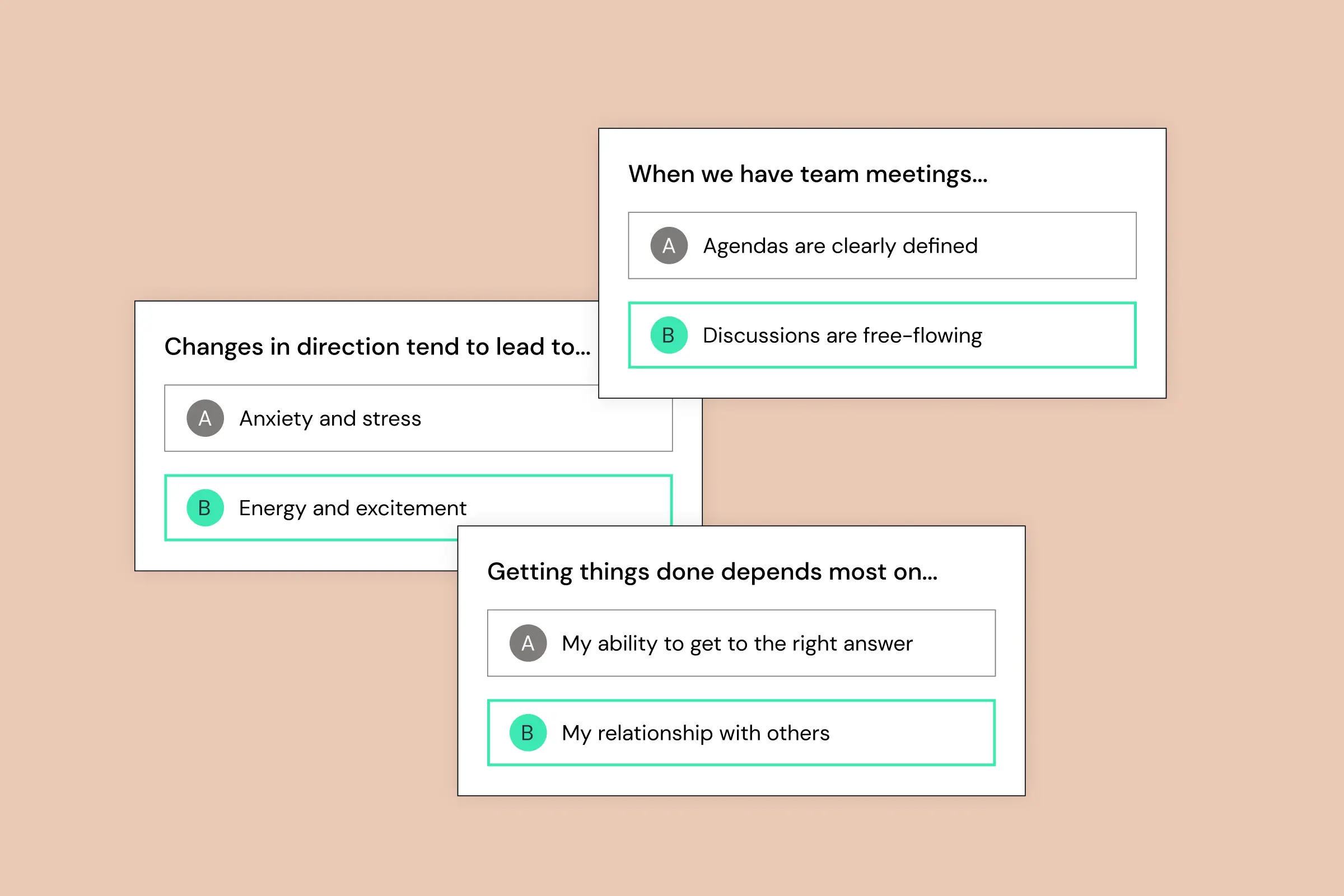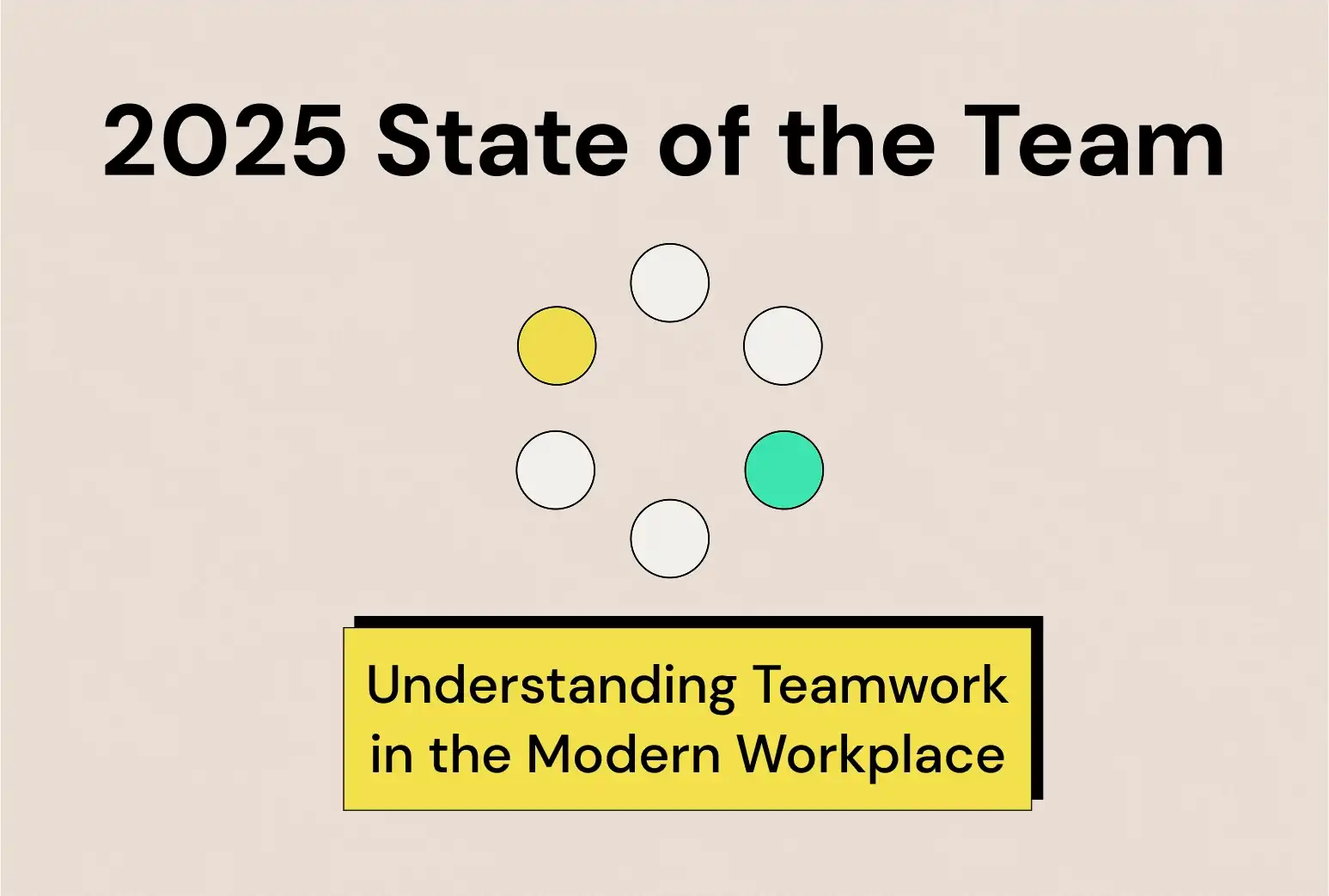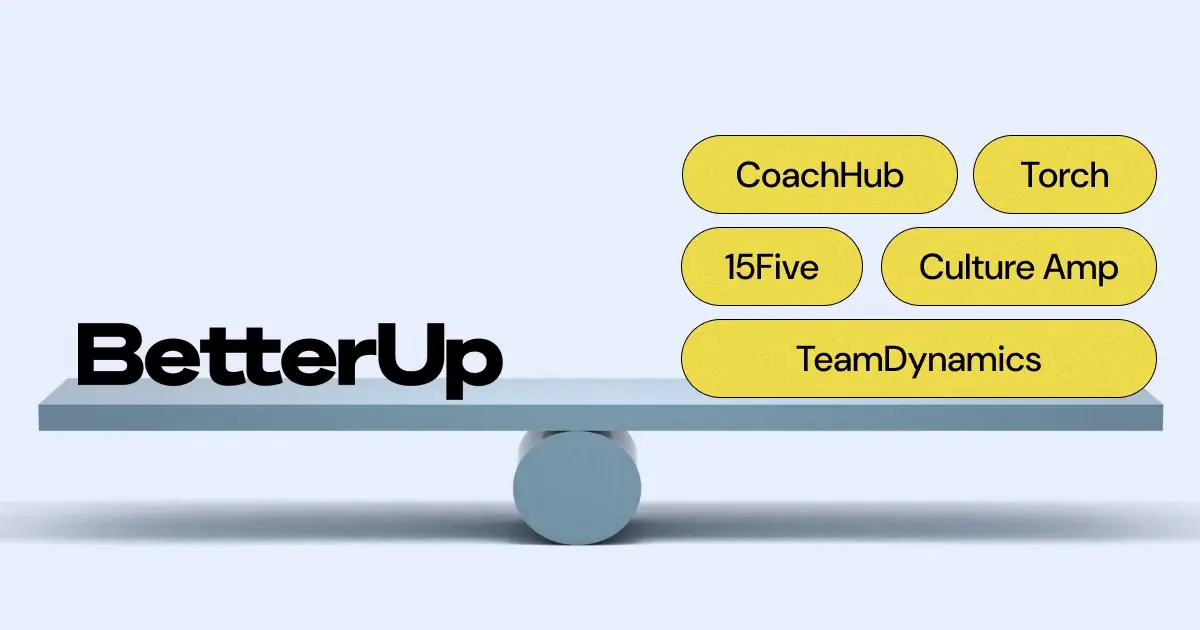Delegative leadership is a management style that empowers team members to take charge of their own tasks and responsibilities. This approach contrasts with more controlling styles, like autocratic leadership, where leaders make all the decisions. In delegative leadership, the focus is on trust and autonomy. Delegative leaders believe in their team’s abilities and provide them with the freedom to innovate and solve problems independently.
The definition of delegative leadership is simple: it’s about letting go of micromanagement and encouraging team members to take ownership of their work. This leadership style is particularly effective in professional environments such as tech companies, marketing teams, finance departments, HR units, and consulting firms. Here, creativity and quick problem-solving are key.
Learn more about the art of delegation and how understanding team dynamics can help!
Why should managers consider delegative leadership? First, it fosters a culture of trust. When team members feel trusted, they are more likely to be engaged and motivated. This leads to higher productivity and better results. Second, delegative leadership enhances innovation. By giving team members the freedom to explore new ideas and approaches, you can drive your team towards creative solutions that might not emerge under stricter management styles.
Consider a tech product team. Delegative leaders in this context empower developers to experiment with new technologies and approaches. This can lead to breakthroughs that give the company a competitive edge. In marketing, delegative leadership allows creative professionals to develop unique campaigns that stand out in the crowded marketplace.
Managers adopting this style should start by understanding the definition of delegative leadership and its benefits. By trusting your team and providing them with the necessary resources, you set the stage for a dynamic and productive work environment. Embrace delegative leadership to unlock your team’s potential and drive success in your organization.
Wondering how to better manage your manager? Check out our guide to managing up.
What is Delegative Leadership?
Delegative leadership, also known as laissez-faire leadership, is a style where leaders delegate authority to their team members. Unlike other leadership styles that involve close supervision and control, delegative leadership focuses on empowering team members to make decisions and take responsibility for their work.
The definition of delegative leadership is rooted in trust and autonomy. Delegative leaders provide guidance and resources but step back to allow their team members to take the lead. This approach can be particularly effective in professional settings where team members are skilled and experienced, such as in tech product teams, marketing departments, finance teams, HR units, and consulting groups.
One of the key benefits of delegative leadership is that it fosters an environment of innovation and creativity. By giving team members the freedom to explore and experiment, delegative leaders can uncover new ideas and solutions that might not emerge under a more controlling leadership style. This is especially valuable in fast-paced industries like technology and marketing, where staying ahead of the curve is crucial.
Read our summary of "Start with Your People: The Daily Decision that Changes Everything" by Brian Dixon to explore many of the themes of delegative leadership.
For instance, in a finance team, a delegative leader might assign a complex financial analysis project to a team member with strong analytical skills. The leader provides the necessary resources and support but allows the team member to determine the best approach to complete the project. This not only empowers the team member but also encourages independent thinking and problem-solving.
Similarly, in an HR team, a delegative leader might delegate the task of developing a new employee engagement program to a team member who has shown a keen interest in employee satisfaction. By doing so, the leader taps into the team member’s passion and expertise, leading to a more effective and innovative program.
In summary, the definition of delegative leadership centers on trust, autonomy, and empowerment. Delegative leaders recognize the strengths and capabilities of their team members and provide them with the freedom to excel. This leadership style can drive innovation, enhance team performance, and create a more dynamic and productive work environment.
{{inline-cta}}
Why Delegative Leadership is Effective
Delegative leadership is effective for several reasons, particularly in professional environments where creativity, innovation, and problem-solving are paramount. Understanding the definition of delegative leadership helps us see why this style can be a game-changer for many organizations.
Learn how understanding your team's behaviors can improve your leadership style.
Promotes Autonomy and Empowerment
Delegative leaders trust their team members to make decisions and take ownership of their work. This trust promotes a sense of autonomy, which can significantly boost employee motivation and satisfaction. When team members feel empowered, they are more likely to go above and beyond in their roles.
For example, in a tech product team, a delegative leader might allow developers to choose the programming languages and tools they prefer. This freedom can lead to more innovative solutions and faster problem-solving, as developers are working within their areas of expertise and comfort.
Encourages Creativity and Innovation
The definition of delegative leadership includes providing the freedom to explore new ideas and approaches. By stepping back and allowing team members to take the lead, delegative leaders create an environment where creativity can thrive. This is especially important in fields like marketing, where unique and groundbreaking ideas are crucial for success.
Consider a marketing team tasked with developing a new campaign. A delegative leader might encourage team members to brainstorm and experiment with unconventional strategies. This approach can lead to more creative and effective campaigns that stand out in the market.
Builds Trust and Accountability
Delegative leadership relies on mutual trust between leaders and team members. By trusting their team, delegative leaders build a strong foundation of trust and accountability. Team members know that they are responsible for their work and that their contributions are valued.
Read our summary of "Leaders Eat Last: Why Some Teams Pull Together and Others Don't" by Simon Sinek to explore many of the themes of delegative leadership.
In a finance team, for instance, a delegative leader might assign the task of preparing a financial report to a team member with expertise in that area. The leader trusts the team member to handle the task independently, which fosters a sense of responsibility and ownership. This trust not only boosts the team member’s confidence but also ensures high-quality work.
Enhances Team Performance and Productivity
When team members feel trusted and empowered, their overall performance and productivity improve. Delegative leadership allows leaders to focus on strategic planning and big-picture goals, while team members handle the day-to-day tasks and decisions.
In an HR team, a delegative leader might delegate the management of an employee wellness program to a team member passionate about health and wellness. This not only leverages the team member’s strengths but also allows the leader to focus on other critical HR initiatives. The result is a more efficient and productive team.
In conclusion, the definition of delegative leadership emphasizes trust, autonomy, and empowerment. Delegative leaders create an environment where creativity and innovation can flourish, leading to higher performance and productivity. By understanding and implementing delegative leadership, managers can unlock their team’s full potential and drive organizational success.
Examples of Delegative Leadership in Action
Seeing delegative leadership in action can help managers understand its practical applications and benefits. Here are some illustrative examples of how delegative leaders operate in different professional settings.
Tech Product Team
In a tech product team, delegative leaders can play a crucial role in fostering innovation. For instance, consider a team developing a new software application. The definition of delegative leadership is evident when the team leader assigns specific modules of the software to different developers based on their expertise. Each developer has the autonomy to choose their approach, tools, and techniques.
By trusting their team members to make technical decisions, the delegative leader encourages innovation and efficiency. Developers feel empowered to experiment with new technologies and methodologies, often leading to breakthroughs that drive the project forward. This approach not only speeds up development but also results in a more robust and innovative product.
Marketing Campaign Project
Delegative leadership shines in creative fields like marketing. Imagine a marketing team tasked with creating a campaign for a new product launch. A delegative leader might divide the project into several components, such as market research, content creation, and social media strategy, and assign each component to different team members.
The leader provides the overall vision and goals but allows each team member to develop their strategies and execute their plans. This autonomy enables team members to leverage their unique skills and creativity, resulting in a more dynamic and effective campaign. By embracing the definition of delegative leadership, the team can produce innovative marketing materials that capture the target audience’s attention.
Finance Team Handling a Project
In a finance team, delegative leadership can lead to more efficient and accurate project outcomes. Consider a scenario where the team is responsible for preparing a comprehensive financial analysis report for a potential merger. The delegative leader assigns different sections of the report to team members based on their expertise, such as revenue projections, cost analysis, and risk assessment.
Each team member is given the freedom to use their preferred analytical tools and methods. This trust and autonomy not only enhance the quality of the report but also speed up the process, as team members work independently on their sections. The result is a detailed and insightful analysis that supports informed decision-making.
HR Team Managing Employee Engagement
Delegative leaders in HR can significantly improve employee engagement programs. For instance, an HR team might be tasked with developing a new initiative to boost employee morale and satisfaction. The delegative leader identifies a team member passionate about employee wellness and assigns them to lead the project.
The team member is given the freedom to research, design, and implement the initiative, while the leader provides support and resources as needed. This approach leverages the team member’s enthusiasm and expertise, resulting in a more effective and engaging program. By applying the principles of delegative leadership, the HR team can create initiatives that truly resonate with employees and enhance overall engagement.
In conclusion, these examples illustrate how delegative leaders operate across different professional settings. The definition of delegative leadership emphasizes trust, autonomy, and empowerment, leading to innovative solutions, higher efficiency, and improved team performance. By adopting delegative leadership, managers can harness the full potential of their teams and drive success in their organizations.
Practical Tips for Managers Looking to Adopt a Delegative Leadership Style
Implementing delegative leadership effectively requires a clear understanding of its principles and a thoughtful approach to managing your team. Here are some practical tips for managers looking to adopt this leadership style.
1. Know Your Team’s Strengths and Weaknesses
To apply the definition of delegative leadership, you must first understand the unique skills and areas for improvement within your team. Conduct regular assessments and take note of each team member’s strengths and weaknesses. This knowledge allows you to delegate tasks effectively, ensuring that responsibilities align with individual capabilities.
For instance, in a finance team, if one member excels at data analysis while another is strong in financial forecasting, assign tasks accordingly. By leveraging each team member’s strengths, you enhance overall team performance and foster a more productive work environment.
2. Set Clear Expectations
Delegative leadership requires clear communication of goals and expectations. While delegative leaders provide autonomy, it is crucial to define what success looks like for each task or project. Clearly outline the desired outcomes, deadlines, and any specific standards that need to be met.
In a marketing team, for example, if you are delegating the creation of a new advertising campaign, specify the target audience, key messages, and campaign objectives. This clarity helps team members understand their responsibilities and work towards common goals.
3. Provide the Necessary Resources
One of the core aspects of the definition of delegative leadership is ensuring that your team has the tools and information needed to succeed. Be proactive in identifying and providing the necessary resources, whether it’s access to specific software, relevant training, or key information.
For example, in a tech product team, if developers are tasked with building a new feature, ensure they have access to the latest development tools, comprehensive documentation, and any required training. Providing these resources upfront empowers your team to work efficiently and effectively.
{{inline-cta}}
4. Trust Your Team
Trust is the cornerstone of delegative leadership. Once you have assigned tasks and provided the necessary resources, step back and allow your team members to take ownership. Avoid micromanaging and give them the space to make decisions and solve problems independently.
In an HR team, for instance, if a member is leading a new employee engagement initiative, trust their judgment and allow them to drive the project. This trust not only boosts their confidence but also encourages innovative thinking and independent problem-solving.
5. Offer Constructive Feedback
While delegative leaders give their team autonomy, providing regular and constructive feedback is still essential. Offer guidance to help team members stay on track and improve their performance. Recognize and celebrate their achievements to keep them motivated.
For example, in a consulting team, after a team member presents a client proposal, provide specific feedback on what worked well and areas for improvement. This feedback helps them refine their approach and delivers better results in future projects.
By following these practical tips, managers can effectively implement the principles of delegative leadership. Understanding the definition of delegative leadership and applying it thoughtfully can lead to a more empowered, innovative, and productive team. Embrace delegative leadership to unlock your team’s potential and drive success in your organization.
Practical Tips for Team Members When Working With a Delegative Leader
Understanding and adapting to delegative leadership can be highly rewarding for team members. Here are some practical tips to help you thrive under delegative leaders.
1. Understand Your Role
In a delegative leadership environment, clarity about your responsibilities is crucial. Make sure you fully understand your tasks and deliverables. If the definition of delegative leadership means you have more freedom in how you achieve your goals, use this autonomy wisely.
For instance, if you are part of a marketing team tasked with developing social media content, ensure you know the campaign goals and target audience. This understanding will guide your creative process and help you produce effective content.
2. Communicate Effectively
Delegative leadership relies on open and effective communication. Keep your manager informed about your progress, any challenges you encounter, and your accomplishments. Regular check-ins can help you stay aligned with the team’s objectives and expectations.
In a tech product team, if you’re developing a new feature, provide regular updates to your leader about your progress. This keeps them in the loop and allows them to provide timely support or resources if needed.
{{inline-cta}}
3. Take Initiative
One of the benefits of working under delegative leaders is the opportunity to take initiative. Proactively identify areas where you can contribute more or suggest improvements. Show accountability by owning your tasks and outcomes.
For example, in a finance team, if you notice a more efficient way to handle financial reporting, propose your idea to your manager. This proactive approach not only demonstrates your commitment but also can lead to process improvements.
4. Seek Growth Opportunities
Delegative leadership often provides room for personal and professional growth. Take advantage of opportunities to learn new skills, tackle challenging tasks, and expand your capabilities. This continuous learning can enhance your performance and career prospects.
In an HR team, if you are passionate about diversity and inclusion, volunteer to lead related initiatives or attend relevant training programs. This involvement allows you to develop expertise in areas that interest you.
5. Embrace Feedback
Constructive feedback is a vital component of the definition of delegative leadership. Be open to receiving feedback and use it to improve your performance. Embrace the opportunity to learn from both successes and mistakes.
For instance, in a consulting team, after delivering a client presentation, seek feedback from your leader and peers. Understand what worked well and what could be improved, and apply these insights to future projects.
By following these tips, team members can thrive under delegative leadership. Understanding the principles and benefits of this leadership style can help you leverage the autonomy and opportunities it provides, leading to greater job satisfaction and success. Working effectively with delegative leaders fosters a collaborative and innovative team environment, driving both personal and organizational growth.
Overcoming Common Challenges in Delegative Leadership
While delegative leadership offers numerous benefits, it also presents certain challenges that managers and team members need to address. Understanding these challenges and finding ways to overcome them can help you make the most of this leadership style.
Addressing Lack of Direction
One common issue in delegative leadership is the potential for team members to feel lost without clear direction. To mitigate this, delegative leaders must provide a strong framework at the outset. Clearly define goals, deadlines, and key deliverables to ensure everyone knows what is expected.
For example, in a tech product team, a delegative leader might start a new project by outlining the main objectives and milestones. This initial guidance helps team members understand the project scope and stay focused, even as they enjoy the freedom to choose their methods.
Ensuring Effective Communication
Effective communication is critical in delegative leadership. Without regular check-ins, team members might feel disconnected or unsupported. Delegative leaders should establish a consistent communication routine, such as weekly meetings or progress updates, to keep everyone aligned.
In a marketing team, for instance, a delegative leader might hold brief daily stand-up meetings to discuss ongoing tasks and address any issues. This practice maintains a sense of cohesion and ensures that everyone is on the same page.
Balancing Workload
Another challenge is the potential for uneven workload distribution. Delegative leaders need to be mindful of assigning tasks fairly and ensuring no team member is overwhelmed. Regularly reviewing task assignments and being open to feedback can help maintain balance.
For example, in a finance team, a delegative leader should monitor the progress of various projects and check in with team members about their workloads. If one member is swamped while another has less to do, the leader can redistribute tasks to even things out.
Providing Adequate Support
While the definition of delegative leadership emphasizes autonomy, it doesn’t mean leaving team members entirely on their own. Delegative leaders should remain accessible and provide the necessary support and resources to help their team succeed.
In an HR team, if a team member is developing a new training program, the delegative leader should be available for consultation and provide access to relevant materials or external experts. This support helps the team member feel confident and capable.
Encouraging Accountability
Accountability can be a challenge in delegative leadership, as team members have significant independence. To address this, delegative leaders should set clear expectations for accountability and performance. Regular feedback and performance reviews can reinforce these standards.
For instance, in a consulting team, a delegative leader might set up quarterly performance reviews to discuss each team member’s contributions and areas for improvement. This practice encourages accountability and helps maintain high performance standards.
Maintaining Team Cohesion
With team members working independently, there is a risk of losing a sense of team cohesion. Delegative leaders can foster a collaborative culture by encouraging teamwork and regular interaction among team members.
In a marketing team, a delegative leader might organize brainstorming sessions or team-building activities to strengthen relationships and encourage collaboration. These efforts help maintain a strong team dynamic, even as members work autonomously.
By understanding and addressing these challenges, managers can effectively implement the principles of delegative leadership. Recognizing the definition of delegative leadership and its potential pitfalls allows leaders to create a balanced and supportive environment where team members can thrive. Overcoming these challenges ensures that the benefits of delegative leadership—such as increased innovation, autonomy, and productivity—are fully realized.
Delegative leadership, when applied thoughtfully, can transform professional environments by fostering trust, innovation, and accountability. Understanding the definition of delegative leadership is the first step toward leveraging its benefits. By empowering team members and providing them with the autonomy to make decisions, delegative leaders create a dynamic and motivated workforce.
The definition of delegative leadership centers on trust and autonomy. Delegative leaders believe in their team’s abilities, allowing them the freedom to explore creative solutions and take ownership of their tasks. This approach has several key benefits:
- Promotes Autonomy and Empowerment: Team members feel trusted and valued, which boosts their motivation and job satisfaction.
- Encourages Creativity and Innovation: Freedom to experiment leads to unique and effective solutions, especially in fast-paced industries like tech and marketing.
- Builds Trust and Accountability: Clear expectations and trust in team members foster a culture of responsibility and high performance.
- Enhances Team Performance and Productivity: Delegative leadership enables leaders to focus on strategic goals while team members efficiently handle day-to-day tasks.
As a manager, embracing delegative leadership can unlock your team’s full potential. Start by understanding your team’s strengths and weaknesses, setting clear expectations, providing necessary resources, and fostering an environment of trust and open communication. Encourage your team members to take initiative, seek growth opportunities, and embrace feedback.
By adopting these practices, you can create a more empowered, innovative, and productive team. Delegative leaders have the potential to drive significant success in their organizations by harnessing the creativity and capabilities of their team members.




.png)








































